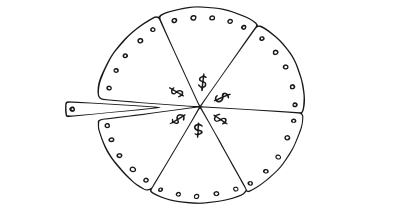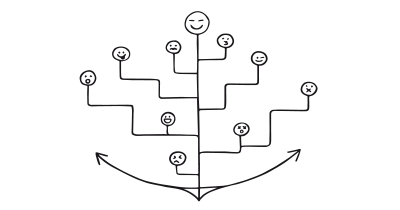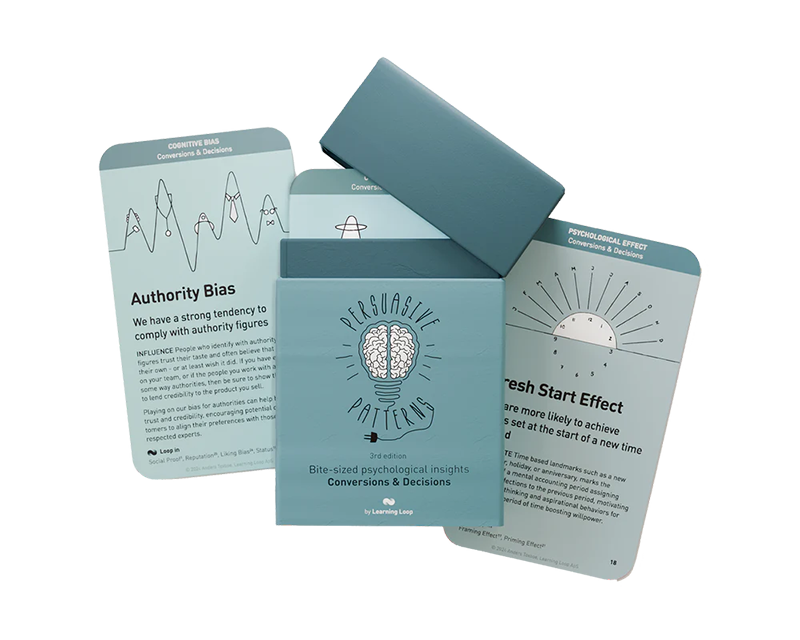
At a favorite local diner, a regular customer enjoys a meal as they usually do every weekend. Upon receiving the bill, they notice an unexpected surcharge. When inquiring about it, the waiter curtly states it’s a new policy, without offering further explanation. Feeling taken advantage of, the once-loyal patron decides not to return and even shares their experience with friends and family, suggesting they reconsider their choice of dining at that establishment.
A user of a popular photo-editing app notices that with the latest update, some of the features they frequently use are now behind a paywall. The change was implemented without any prior notification. Disgruntled, the user leaves a negative review on the app store and switches to a competitor’s application. They also join online forums related to mobile apps and share their experience, cautioning others about the unexpected changes.
Retaliation refers to the inherent human tendency to respond to actions in a manner that mirrors the nature of the original action, be it positive or negative.
At its core, retaliation is deeply rooted in the principle of reciprocity, but with a focus on responding to perceived slights or negative actions. While reciprocity typically emphasizes the positive cycle of giving and receiving, retaliation underscores the human desire to “settle the score” when treated unfairly or negatively. This pattern can influence decisions, behaviors, and overall experiences with products or services. However, when tapping into this pattern, it’s crucial to approach it with care, ensuring that interactions foster a positive user experience and do not instigate negative behaviors or feelings.
The study
Brosnan and De Waal (2003) observed capuchin monkeys, who, when presented with unequal rewards for the same task, displayed a sense of fairness strikingly similar to humans. A monkey that received a less desirable reward (like a slice of cucumber) for the same effort as another monkey getting a more desirable reward (a grape) would often refuse to accept their reward. This behavior, termed “equity aversion,” suggests that the urge to retaliate when perceiving unfairness is not exclusive to humans and has deep evolutionary roots.
B. Brosnan, S. F., & De Waal, F. B. (2003). Monkeys reject unequal pay. Nature, 425(6955), 297-299.
The principle underlying retaliation is rooted in the fundamental human desire for fairness and justice. When individuals perceive that they have been treated unfairly, they often respond with actions intended to “balance the scales.” This drive for equity is deeply embedded in human psychology and can be observed across cultures and contexts.
Retaliation is intricately linked to the principle of Loss Aversion. The pain of a loss (or perceived slight) is often felt more acutely than the pleasure of a gain. This is especially true for retaliation, or negative reciprocity, which carries more emotional weight than positive reciprocity. The urge to “set things right” after feeling wronged often outweighs the potential benefits of letting go or responding with generosity.
Designing products with Retaliation
If users feel a product is taking more from them (in terms of data, time, or resources) without matching in given value, they might ‘retaliate’ by leaving negative reviews, discontinuing use, or advocating against the product in their networks.
Retaliation is often the result, when businesses are not fair, honest, or engage in manipulative and unethical design practices. Designers have a responsibility to ensure that the exchange between the user and the product is always perceived as fair. When users invest time, data, or any other form of commitment, they should feel they are getting equivalent or higher value in return. This balance can be reinforced by timely rewards, acknowledgments, or enhanced features.
When designing features that play on the users’ need for retaliation, it’s essential to ensure they are not abused and that they always serve a legitimate purpose. The goal should not be to promote negativity but to allow users a fair way to express dissatisfaction or protect their interests. Ethical considerations must be at the forefront to ensure users’ actions are justified and not simply vindictive. Companies should ensure that such features are not abused and that there are checks and balances in place to prevent misuse.
While negative reciprocation is powerful, it’s crucial to balance it with mechanisms for positive feedback. This ensures that users are not always in a negative feedback loop and can also appreciate and reward good behavior or content. If a retaliation or feedback mechanism is implemented, set clear guidelines on its use. This can prevent misuse and ensure that retaliation is used constructively.
Especially in platforms where user-generated content is dominant, combining retaliation mechanisms with moderation tools can help in maintaining the quality and positivity of content. Ensure that users are aware of the implications of retaliation mechanisms, how they work, and the potential consequences. This can prevent misuse and foster a more informed and responsible user community.
Not all products or services are suitable for integrating a retaliation mechanism. It’s essential to understand the user base, the context of use, and the potential implications of adding such a feature.
Ethical recommendations
One primary concern with allowing retaliation is the pitfall of creating a toxic environment or to unfairly target certain users. For instance, allowing users to collectively downvote or retaliate against a particular user or viewpoint could lead to groupthink, where minority opinions are suppressed. Additionally, without proper safeguards, the retaliation mechanism can be weaponized for personal vendettas, cyberbullying, or to serve vested interests. Lastly, overemphasis on negative feedback can create a hostile environment, deterring new users and demotivating existing ones.
- Implement safeguards
Introduce measures to prevent the misuse of the retaliation mechanism. For example, limit the frequency of negative feedback a user can give within a specific timeframe or introduce cooldown periods. - Monitor and moderate
Regularly monitor user interactions, especially where retaliation mechanisms are employed. Consider implementing automated systems to flag potential misuse and ensure human oversight for critical decisions. - Educate the user base
Make users aware of the purpose of the retaliation feature and the importance of using it responsibly. Encourage constructive feedback over mere negative reactions. - Balance with positive interactions
While allowing for negative reciprocation, always ensure there are avenues for positive interactions. This balance can prevent the environment from becoming overly negative. - Transparency
If a user is on the receiving end of retaliation actions, ensure they have a clear understanding of why it happened and provide avenues for redress or appeal.
Ethical use of the Retaliation pattern requires a deep understanding of human behavior and a commitment to user welfare. By ensuring a balance between allowing users to express dissatisfaction and preventing misuse, platforms can benefit from the genuine feedback while safeguarding the user community’s health and well-being.
Real life Retaliation examples
The upvote and downvote system allows users to reward or “punish” content. If users disagree with a post or find it irrelevant, they can downvote it, pushing it further down the page.
Uber
If a passenger is rude or makes a mess, drivers can “retaliate” by leaving a low rating, which might make it harder for the passenger to get rides in the future.
Airbnb
If a guest damages a property or violates house rules, hosts can leave a negative review. On the flip side, if a host provides an unclean or unsafe environment, guests can retaliate with a poor rating.
Trigger Questions
- How can I ensure users perceive the exchange (time, data, commitment) with the product as fair and valuable?
- How can I provide users a way to express dissatisfaction without promoting negativity or toxicity?
- How can I balance retaliation mechanisms with opportunities for positive feedback and interactions?
- What safeguards can I implement to prevent misuse of retaliation features and protect the well-being of the community?
- How can I clearly convey the reasons for any negative consequences a user faces and provide avenues for them to appeal or rectify?
- How can I ensure that the retaliation mechanism serves a legitimate purpose and does not encourage vindictive or harmful behaviors?
Pairings
Retaliation + Social Proof
People often look to others to decide how to react or behave. If a product or service allows users to see how others are reacting, especially in retaliation to negative behaviors, it may amplify the effect. For example, on platforms like Reddit, users downvote inappropriate or irrelevant content. When others see a comment with many downvotes, they may be more likely to downvote as well, reinforcing the negative feedback loop.

People repay in kind

We assume the actions of others in new or unfamiliar situations
Retaliation + Commitment & Consistency
Once users take a stand or position, they tend to remain consistent with it. If a platform offers a way for users to publicly retaliate or express their dissatisfaction, these users might stick to their position more adamantly in the future. An example would be a user leaving a negative review on a product; they are less likely to change their viewpoint even if the issue is resolved later.

People repay in kind

We want to appear consistent with our stated beliefs and prior actions
Retaliation + Reputation
A user’s reputation can be influenced by their actions and the reactions (including retaliation) of others. On platforms like eBay, for instance, both buyers and sellers are wary of negative feedback as it directly impacts their reputation.

People repay in kind

We adjust our personal behavior to reflect how we are perceived by others
A brainstorming tool packed with tactics from psychology that will help you increase conversions and drive decisions. presented in a manner easily referenced and used as a brainstorming tool.
Get your deck!Related plays
- Fairness and Retaliation: The Economics of Reciprocity by Fehr & Gaechter
- Negative Online Word-of-Mouth [ by Arruda Filho & Barcelos
- The Reciprocity Principle: Give Before You Take in Web Design at Nielsen Norman Group
- Smith, J. & Doe, A. (1985). The dynamics of negative reciprocity in interpersonal relationships. Journal of Social Psychology, 45(2), 123-135.
- B. Brosnan, S. F., & De Waal, F. B. (2003). Monkeys reject unequal pay. Nature, 425(6955), 297-299.
- Johnson, T. & White, L. (1990). The psychology of retaliation in interpersonal contexts. Behavioral Science Quarterly, 10(4), 56-70.
- Perez, M. & Lee, H. (2000). Negative reciprocity and its impact on consumer behavior. Consumer Psychology Journal, 5(1), 20-30.
- Gouldner, A. W. (1960). The norm of reciprocity: A preliminary statement. American sociological review, 25(2), 161-178.
- Kahneman, D., & Tversky, A. (1979). Prospect theory: An analysis of decision under risk. Econometrica, 47(2), 263-291.
- Fehr and Gächter (2000). "Fairness and Retaliation: The Economics of Reciprocity". Journal of Economic Perspectives. 14 (3): 159–182.

